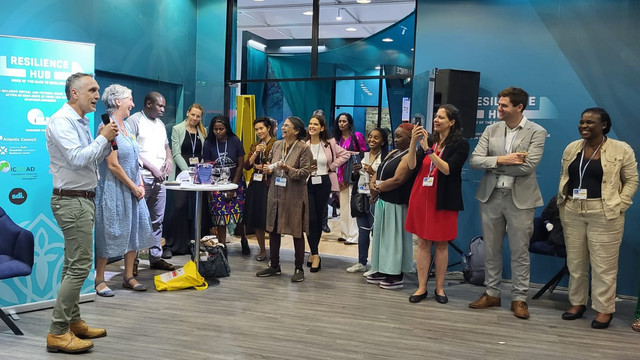Responding to climate change in Tanzania by strengthening dryland governance and planning
District governments in Tanzania improved their capacity for effective adaptive planning by strengthening planning processes and establishing local adaptation funds. With support from a consortium of government and non-government stakeholders, they tested a devolved climate finance mechanism for building resilience, which informed policy and action in other drylands.

One of the devolved climate finance project sites in Zanzibar that has benefited from using existing government systems to channel climate finance towards investments prioritised by communities (Photo: Amina Kashoro)
In Tanzania, climate change is exacerbating the challenges to the livelihoods of millions of people.
District councils are the local government authorities leading the planning and budgeting process for local development, responsible for understanding community priorities and investing in social and economic development. This work in Tanzania was part of a wider programme, underpinned by shared principles and a common approach to devolving climate finance to the local level.
What did IIED do?
Along with a consortium of government and non-government partners, IIED provided technical support to the government of Tanzania, in partnership with the United Nations Capital Development Fund (UNCDF). The task was to design and implement a devolved climate finance mechanism that will enable climate-resilient planning and budgeting.
The mechanism uses existing government systems to channel climate finance towards investments prioritised by communities, which build resilience to the impacts of climate change. The nature of the approach drew on experience from other countries implementing similar mechanisms in Kenya, Mali and Senegal.
Devolved climate finance in Tanzania
The devolved climate finance consortium supports the local climate finance Initiative – a series of projects improving the alignment of national and local government priorities and making sure climate change adaptation is included in development planning in Tanzania.
The consortium is chaired by the President's Office – Regional and Local Government (PO-RALG), and includes the Vice President’s Office, Ministry of Finance, as well as government training institutions, such as the Institute for Rural Development and Planning and the Local Government Training Institute. These institutions are responsible for developing programmes that will train future government employees on the approach and the lessons emerging from it.
At community level Sustainable Environment Management Action and the Tanzania Natural Resource Forum provide implementation support and communication outreach.
Building on the experience of the Adaptation Consortium in Kenya, a number of districts in Northern and Central Tanzania are building their readiness as future sub-national 'executing entities', to access and disburse climate finance in support of community-prioritised adaptation. The districts are piloting the devolved climate finance mechanism and sharing learning horizontally to other districts and vertically to government ministries and beyond.
With funding from UKaid, the DCF Consortium supported the three districts to:
- Establish devolved district level climate finance mechanisms
- Enhance climate-resilient development planning at district and divisional levels
- Research the role of customary institutions in climate resilient water planning and governance, and
- Inform national actors about lessons from the projects.
There was significant involvement from the Tanzanian Meteorological Office, which sought feedback from communities on climate information it produces.
The project sought capitalised district level adaptation funds to finance investments in community prioritised public goods. Thirty-five investments were made, including rehabilitation and construction of water infrastructure, construction of livestock health facilities and improving access to markets.
Highlights from a project visit in January 2018 to community-prioritised investments were captured in a 'Twitter Moment'.
Publications
Additional resources
Participatory resource mapping, Sam Greene, Ced Hesse (2017), IIED Toolkit
Maps that build bridges, Ced Hesse (2013), IIED Reflect & Act
Blog: Community maps reveal rich resources of land policymakers think is empty, by Suzanne Fisher (2013)
Participatory digital map-making in arid areas of Kenya and Tanzania, Tom Rowley (2013), IIED, excerpt from Participatory Learning and Action 66
Tracking Adaptation and Measuring Development, Nick Brooks, Simon Anderson, Jessica Ayers, Ian Burton and Ian Tellam (2011), IIED Working paper











